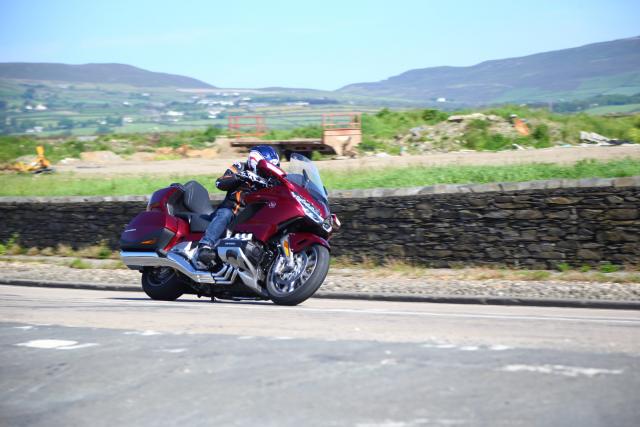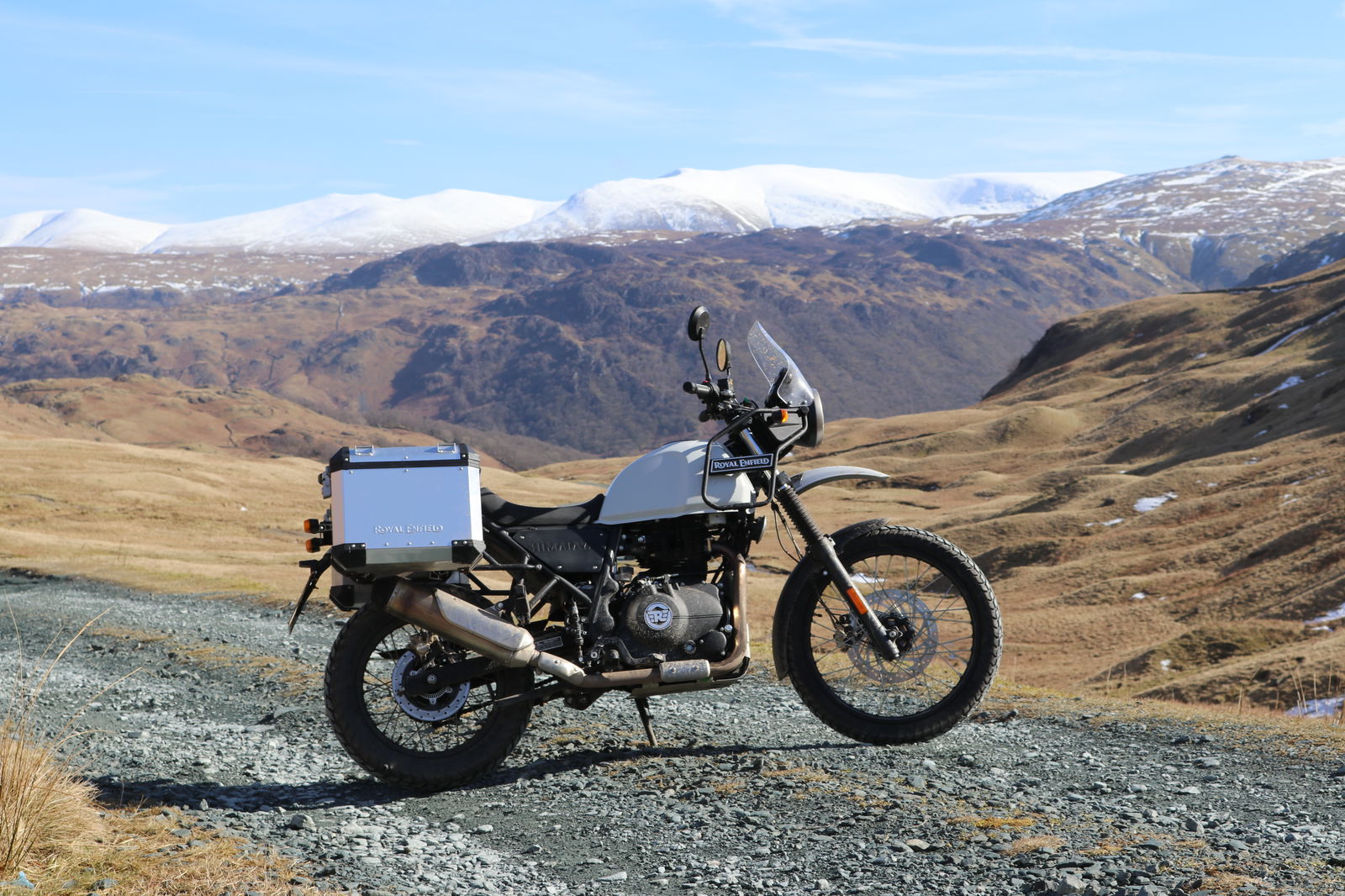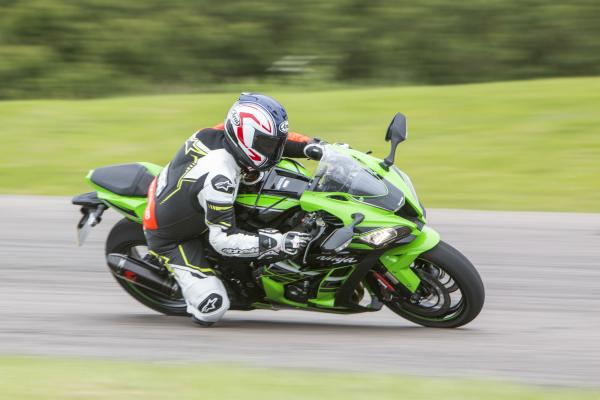2018 GL1800 Gold Wing review
The 2018 GL1800 Gold Wing brings the mega-tourer down in size – but is it still a big performer?

The 2018 GL1800 Gold Wing is another bike in the manufacturer's fine tradition of luxury tourers. This one is one the smaller side, but does it still make a big impression?
2018 GL1800 Gold Wing: Design
Size, as we all know, isn’t everything. Which is just as well for this test, since there are some things about it which are smaller than we might like. We’ve got a GL1800 Gold Wing booked in later this summer for a proper test, but at the weekend, we managed to grab a half-day riding one round the Isle of Man. We were at the TT with Honda, and they’d brought along some 2018 test bikes – so we nicked the keys, and buggered off into the Manx hinterland for some luxo-touring miles.
The fact we had a slightly abbreviated test seems apt though. Because Honda’s given the big Wing a slimming makeover. Indeed, they’re totally repositioned it in many ways, with almost 50kg weight saved on some versions, smaller fairing and screen, less luggage space and smaller fuel tank. The engine is also smaller and more compact, despite having much more in the way of tech – a revamped Unicam four-valve combustion chamber design, ride-by-wire and optional DCT auto-box amongst the new tricks.

So, a quick test, on a smaller Wing, within the confines of an island measuring just 30 miles by 10 miles. Luckily, we had some big fun, straight from the off. Before we even got moving though, I spent a useful 20 minutes working our the new infotainment setup on the 2018 Wing. Compared with the last version of the old Wing setup I tried, it’s a massive leap forward, with good Bluetooth phone integration, satnav, radio and audio functions, all displayed on a sweet new 7-inch full colour LCD screen. Perhaps surprisingly, it’s not a touch screen, but then the Wing has plenty of buttons on the handlebars and central control panel to make it easy to operate without a touch function. Tunes working, phone connected, satnav fired, up, and we were ready to rock.
The first few miles out of Douglas took a bit of concentration to adapt to the still-chunky Gold Wing. It’s down from 413kg wet to 379kg (on this Tour version), so while they’ve done well there, it remains a fairly mighty behemoth. Once you get into the golden groove though, it’s a lot easier to manage than the old model, and does feel closer to something like a Pan European than the old Wing did. Much of that is down to the new double-wishbone front suspension system, of which more anon.
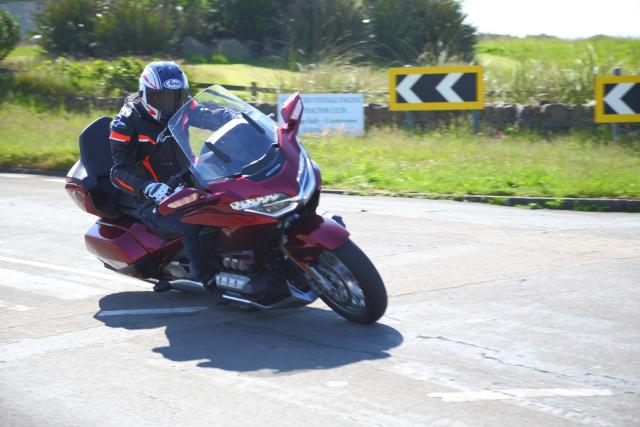
2018 GL1800 Gold Wing: Engine
We were actually riding on Mad Sunday, and after heading down Bray Hill, we decided to (mostly) steer clear of the lunacy of the Mountain Course, and headed out towards the Southern 100 course, near Port St Mary. The roads round here are much like the main course roads – fast, sinuous, and with a hint of danger, especially once you see the ‘national speed limit’ signs and open the throttle right up.
Honda’s brought a manual Wing along, rather than the DCT auto version, which I’m pretty pleased about. I can see the point of DCT, especially on a big luxury bike like this, but in some ways, having the extra control which a clutch brings is even more important with a really massive machine. Stuff like bumping up onto a high kerb is tricky with just the computerised clutch bite of a DCT gearbox… This manual bike does have a hill-start assist function, which holds on the back brake automatically for you when you activate it, which is useful. It also gets a similar reverse gear to the old bike, using the starter motor to move the bike back slowly (the DCT bike has an actual reverse gear in the tranny, so uses the engine proper to move backwards). Tech aside, the DCT adds 4kg and nearly £3k too.
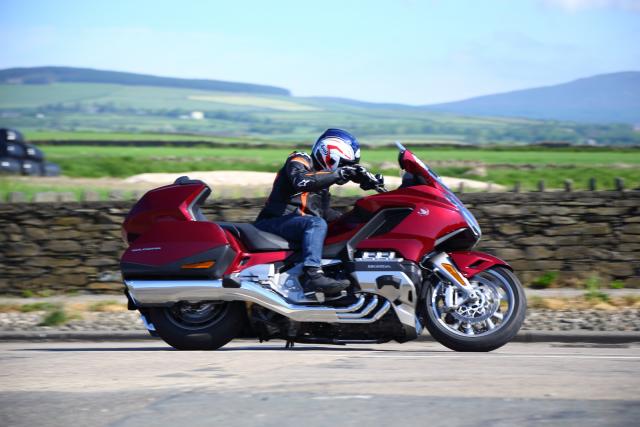
What Honda hasn’t done, though, is fit a quickshifter to the manual box, which is a bit annoying. Now, I know a lot of folk think a quickshifter is a performance gizmo, only useful to mad racers and track fiends, but nowadays, I reckon it’s a useful addition to any bike. Honda’s got the ride-by-wire throttle here already, so it would be a breeze to add an up- and down-shifter with auto-blipper. The stress is lower once you’re on the move, and when you get a shift on, the noise of a flat-six on auto-blip would be a marvellous addition to the Wing experience.
We’re having an experience now all right. The roads down here are fairly quiet, and I’m out with another journo on a Honda Fireblade, so we’re pushing on a bit. That new front end is excellent, and gives much more feedback and communication than you got on the old Wing. You can see the top of the linkage poking up either side of the steering head, and it’s constantly moving up and down, which is a little distracting at first, but really interesting to watch too. It’s amazing seeing how much the suspension is moving, even on what seems like a smooth road, and how well it absorbs the motion without feeling soft or vague.

The new flat-six engine is also creamy smooth (of course!) and really civilised. Peak power is about the same as before, at 125bhp, which is probably just about enough for a bike like this. And while the performance isn’t insane in the way something like a BMW K1300GT is, once you start to hustle, the world goes into reverse pretty rapidly. The brakes are strong and have plenty of feel, but you’re at the helm of almost half a tonne of man and machine, so there’s a limit on how good the brakes can really be. The ground clearance is as you’d expect – the footpegs deck out quite early, but not enough to get in the way to any great extent. Suspension has onboard damping and preload adjustment via the main dashboard display screen, which is also where I found the ‘traction control off’ button, after perusing the manual to work it out. The TC, branded ‘HSTC’ (Honda Selectable Torque Control), is a tickbox buried in a vehicle settings menu; fairly hard to get to compared with the dedicated button on Honda’s other bikes.
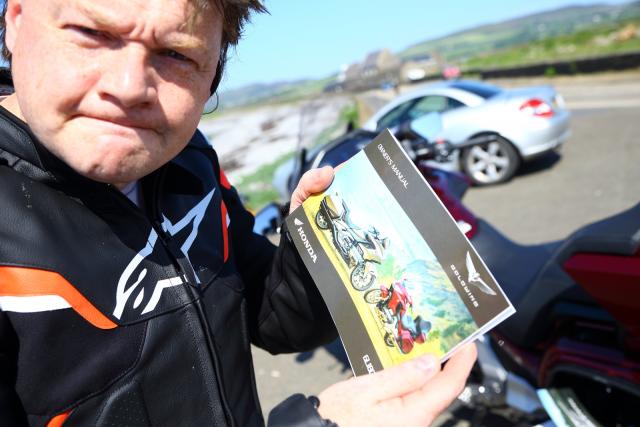
2018 GL1800 Gold Wing: Luggage
We stop for some pics, and I get my camera bag out of the topbox. Honda’s been quite up front about the luggage – it’s a fair bit smaller than before, which was intentional, and part of the overall redesign. Honda’s research showed that most owners didn’t use their Wings for massive weeks-long excursions after all, with most trips being a few days at most. So the cavernous storage space was deemed unnecessary on the new bike, with even the built-in top box deleted from the standard entry-level machine, and the side panniers have been shrunk too.

I can see the argument of course – but I’m not sure I agree. Much of the point of a big bike like this is surely big storage, so reducing it risks compromising in important ways, and making it a little pointless. If the 400kg bike only has the same storage capacity as a much lighter, more sporty tourer, then maybe the smaller bike will simply end up being the more useful choice? I’d like to have seen Honda be a bit more innovative here – maybe with expandable luggage like BMW R1200 GS panniers, or optional larger pannier and top box lids, which you could swap easily to give more capacity when needed. Size aside, the luggage system itself is pretty smart, with fingertip buttons for opening and nice hydraulically-damped lids. There’s remote opening as part of the keyless ignition keyfob too, so a proper setup all in.
It’s lunchtime now, and Honda wants the Wing back so it can take various dignitaries and bigwigs out for tours of the TT. I’m sad to say bye to the big beast of course – but definitely looking forward to getting hold of one and doing a proper, king-sized touring job on it later this summer...

2018 GL1800 Gold Wing specs
- Engine: 24v SOHC, liquid-cooled flat-six, 1,833cc
- Bore x stroke: 73 x 73mm
- Compression ratio: 10.5:1
- Max power 125bhp@5,500rpm
- Max Torque (claimed) 125ft lb at 4,500rpm
- Transmission: six speed, shaft
- Frame: Cast aluminium twin beam
- Front suspension: Double-wishbone monoshock
- Rear suspension: Single-sided Pro-Link, monoshock
- Brakes: 320mm twin discs, six-piston calipers (front), 316mm single disc, three-piston caliper (rear), ABS/linked brakes
- Wheels/tyres: Aluminium, 130/70 18 front, 200/55 16 rear
- Rake/trail: 30.5°/109mm
- Wheelbase: 1,695mm
- Kerb weight (claimed): 383kg
- Fuel capacity: 21.1 litres
- Price: £26,679 (£29,699 for the DCT version)
